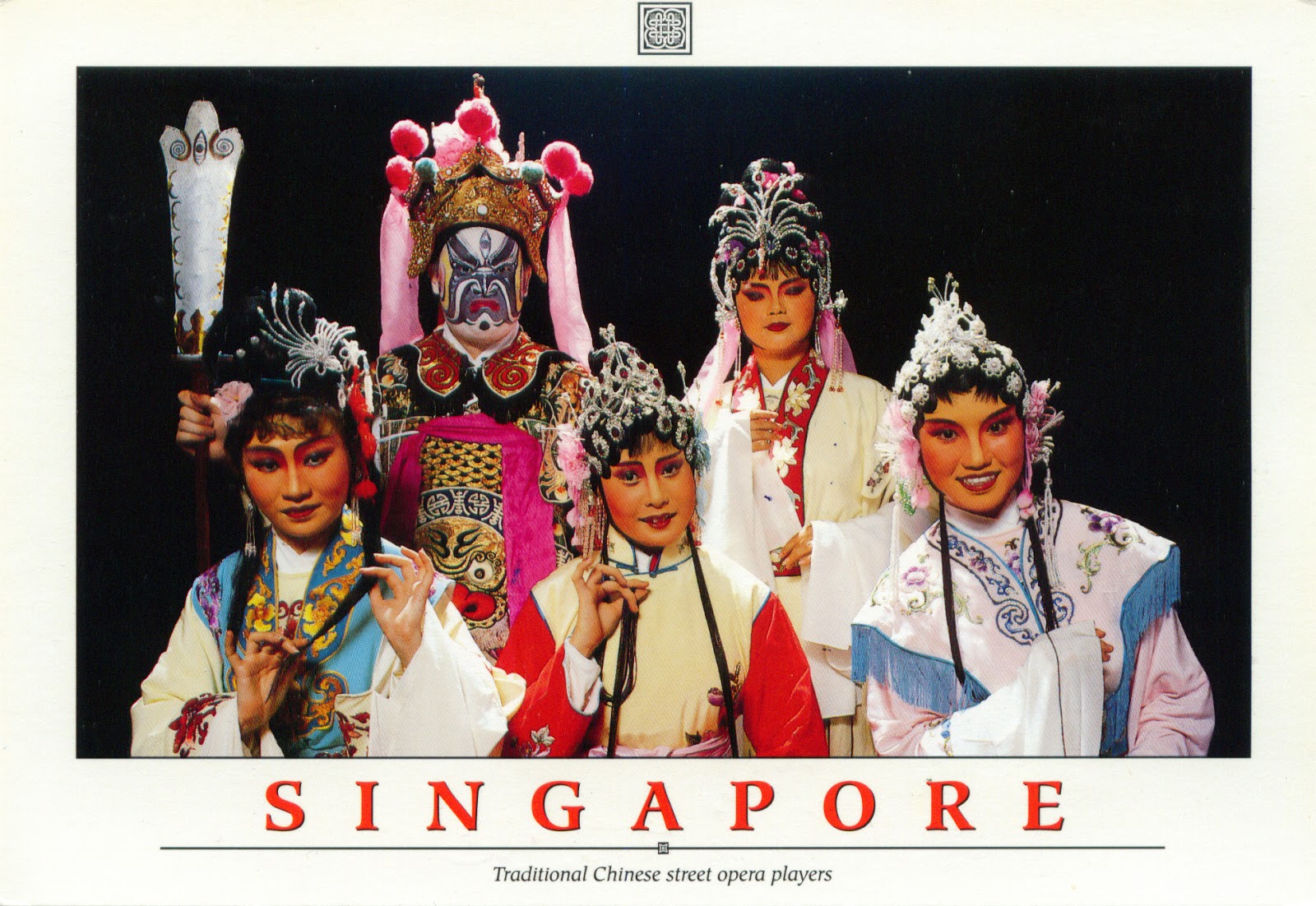November 1, 2014
1326 SINGAPORE - Traditional Chinese street opera players
Wayang (a Malay word meaning "a theatrical performance employing puppets or human dancers") commonly refers to Chinese street opera in Singapore, though it is also used in reference to other forms of opera such as wayang kulit. In Mandarin, Chinese street opera is known as jiexi (street show). This traditional Chinese dramatic form, which incorporates a wide range of art forms like song, dance, mime, acrobatics and martial arts, was brought to Singapore by immigrants from China during the 19th century as part of their religious rites.
It became in short time the most accessible form of entertainment for this community, and its popularity rose to such a level, that the large crowds at these performances worried the authorities. It continued to be performed at indoor venues and in the streets through the Japanese Occupation, but after that, as a result of the post-war developments, of the replacement of the dialects with Mandarin among the Chinese, and of the westernisation of the population, it ceased to be a form of mass entertainment, even if it is considered an icon of Chinese heritage and culture.
The three main genres of wayang in Singapore are those of the three largest Chinese dialect groups in Singapore: fujianxi (Hokkien opera), chaoju (Teochew opera) and yueju (Cantonese opera), each with distinctive features. Gezaixi, the most popular type of fujianxi, is based on folk tales of the Fujian province and is described as having a characteristic crying melody. Chaoju is based on folk ballads and dances, and is known for its clear and tender singing style, fan-playing and acrobatic stunts. Yueju is based on tales from Chinese history, literature and mythology.
Stage props (qiemo) are kept to a minimum and often used symbolically whereby a horse whip represents a horse while flags and banners with wind prints represent gales. Chinese operatic roles generally fall into one of four main categories: sheng (male), dan (female), chou (clown) and jing (painted face). Each category has several sub-types usually classified by age, status and/or personality.
In any Chinese opera, each performer’s makeup reflects the traits of the character being portrayed. There are two distinctive styles: the junban (charming makeup) which is applied lightly at the brow and eye areas, usually on sheng or dan characters, and the distinctively patterned caiban (colourful makeup) which is worn mainly by jing characters. Certain colours convey specific meanings. For example, red is used to symbolise bravery, loyalty and uprightness, while gold and silver usually indicate that the character is a god or spirit.
A performer's costume generally consists of a headdress, robes, shoes and an artificial beard for a sheng or jing character or hair accessories for a dan character. Attires vary between characters and give hints to their personalities. Every costume is intricately embroidered and/or beaded and very expensive. Some costumes have long flowing sleeve extensions known as shuixiu (water sleeves), which performers use symbolically to express their characters' emotions.
About the stamps
The two stamps are part of the first set of the definitive series Vanishing Trades, issued on October 16, 2013, and designed by Lim An-ling:
• Dairy men (1st Local)
• Beaded slippers makers (2nd Local) - It's on the postcard 0974
• Kachang puteh sellers (0,05 SGD)
• Lantern makers (0,20 SGD) - It's on the postcard 1326
• Songkok makers (0,30 SGD) - It's on the postcard 1326
• Goldsmiths (0,45 SGD)
• Cobblers (0,50 SGD)
• Knife sharpeners (0,55 SGD)
• Ice-ball sellers (0,65 SGD)
• Parrot astrologers (0,80 SGD)
The second set of the series Vanishing Trades was issued on November 26, 2014:
• Cage makers (0,40 SGD)
• Garland makers (0,60 SGD) - It's on the postcard 1851
• Kite makers (0,70 SGD)
• Chinese calligraphers (0,90 SGD)
References
Wayang (Chinese street opera) - Singapore Infomedia
Sender: Lee Hock Peng
Sent from Singapore, on 26.05.2014
Photo: R. Ian Lloyd
Etichete:
AS - ASIA,
AS-Singapore,
SINGAPORE
Locaţia:
Singapore
Subscribe to:
Post Comments (Atom)





No comments:
Post a Comment